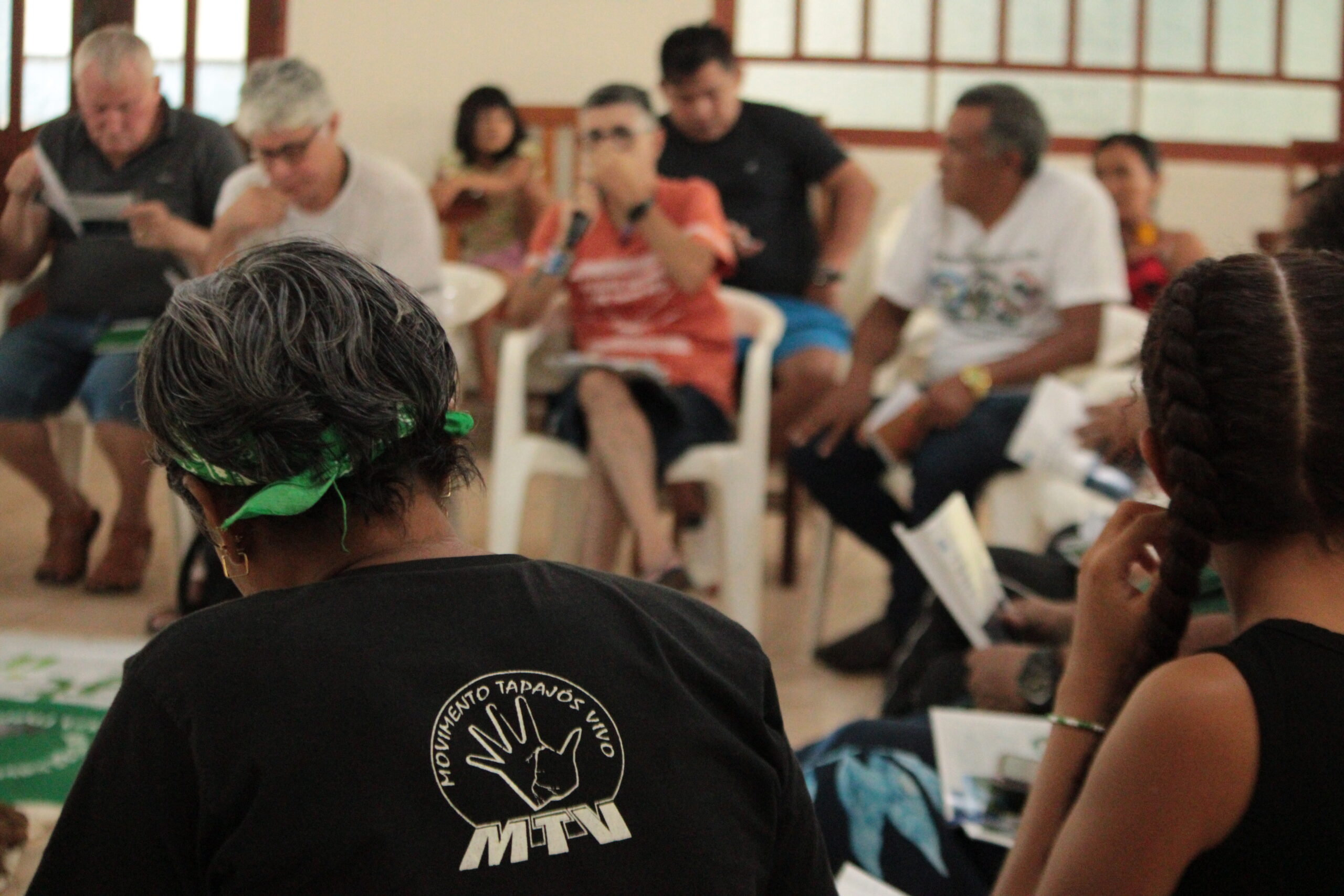By Kamila Sampaio, Johnson Portela, and Alice Matos from Movimento Tapajos Vivo.
The Tapajós River basin connects Brazil’s two largest biomes: the Amazon and the Cerrado. It is one of the country’s last major free-flowing water corridors, covering an area of 489,000 square kilometers. The river originates in the state of Mato Grosso from the confluence of the Juruena and Teles Pires rivers and flows until it meets the Amazon River in Santarém, western Pará. Along its banks live Indigenous peoples, Quilombola communities, traditional populations, riverine peoples, and urban residents who maintain ancestral and daily relationships with the river. For these communities, the Tapajós is a source of food, spirituality, memory, identity, transport, and economic livelihood.
In recent decades, especially following the installation of the first major commodity export terminal in Santarém, the region has undergone an accelerated process of exploitation driven by agribusiness expansion. Since then, the Tapajós River has become one of the main targets of a development model based on large infrastructure and logistics projects, mining, and the advancement of the agricultural frontier. Projects such as Ferrogrão, grain ports, hydroelectric dams, waterways, and highways, combined with the growth of illegal gold mining, are threatening, and in many cases already compromising, the socio-environmental dynamics of the region. These interventions have caused profound transformations in the river and in the lives of local populations, serving primarily economic interests linked to global commodity trade.
In the face of these challenges, local resistance has grown stronger in defense of the territory and in building alternatives to the predatory exploitation model. A key example is the Tapajós Vivo Movement (MTV), which since 2009 has brought together grassroots organizations and civil society actors committed to protecting the river, the forest, traditional territories, and urban peripheries. Grounded in the principles of socio-environmental justice and Amazonian Buen Vivir, the movement unites Indigenous peoples, riverine communities, fishers, traditional populations, youth, Quilombola communities, and urban dwellers through ongoing processes of political education, social mobilization, and advocacy.
For the Tapajós Vivo Movement, the struggle to recognize the Tapajós River as a subject of rights is, above all, a strategy to strengthen socio-environmental justice and protect the cultural ways of life in the basin. It is a direct response to the multiple threats and violations posed by large, medium, and small-scale projects advancing over the territory.
Understanding the Tapajós as a subject of rights is rooted in the belief that nature has intrinsic value, regardless of its usefulness to humans. This approach breaks with the logic of appropriation and exploitation of natural resources, proposing a profound transformation in legal, ethical, and institutional paradigms. In this context, the rights of nature, and in particular, the rights of rivers, challenge the dominant view that reduces water to an economic resource, as defined in Law No. 9,433 of 1997. On the contrary, this perspective affirms that water is a living being, with cycles, histories, memories, and relationships that traverse cultures, spiritualities, and diverse ways of inhabiting the territory.
As a socio-environmental collective, the Tapajós Vivo Movement has fostered articulation and mobilization among regional social movements, leading a series of initiatives to defend the territory and community rights. Notable actions include the First and Second Caravans in Defense of the Tapajós River (2014–2016), the Tapajós Solar Project—a proposal for a decentralized and just energy transition to protect the river—the Gathering of the Waters (2019–2021), the Amazonian Socio-Environmental Militancy School (2022–present), and the Participatory Water Management Project for the Tapajós River Basin (2024–present).
In addition to these structured initiatives, the collective also promotes dialogue circles and community meetings addressing issues such as infrastructure and the rights of nature in the Tapajós region. In this way, MTV plays a key role as a socio-environmental mobilizing agent, fostering dialogue among social movements and strengthening resistance against projects that threaten the river. It is important to highlight that none of these achievements would be possible without the essential collaboration of partners—whether individuals or organizations—because the defense of the Amazon, and especially of the Tapajós, is a collective struggle.
Gathering for the legal protection of the Tapajós river and the Amazonian socio-environmental militancy school
To strengthen this perspective, the Tapajós Vivo Movement has promoted grassroots education spaces and articulation meetings focused on collectively building legal recognition of the Tapajós River. In partnership with International Rivers, two regional gatherings were held in October 2024 and May 2025, bringing together leaders and representatives from organizations and social movements from the Upper, Middle, and Lower Tapajós. The goal was to collaboratively build short-, medium-, and long-term community, advocacy, and legal strategies to protect the river and defend the rights of the peoples of the basin.
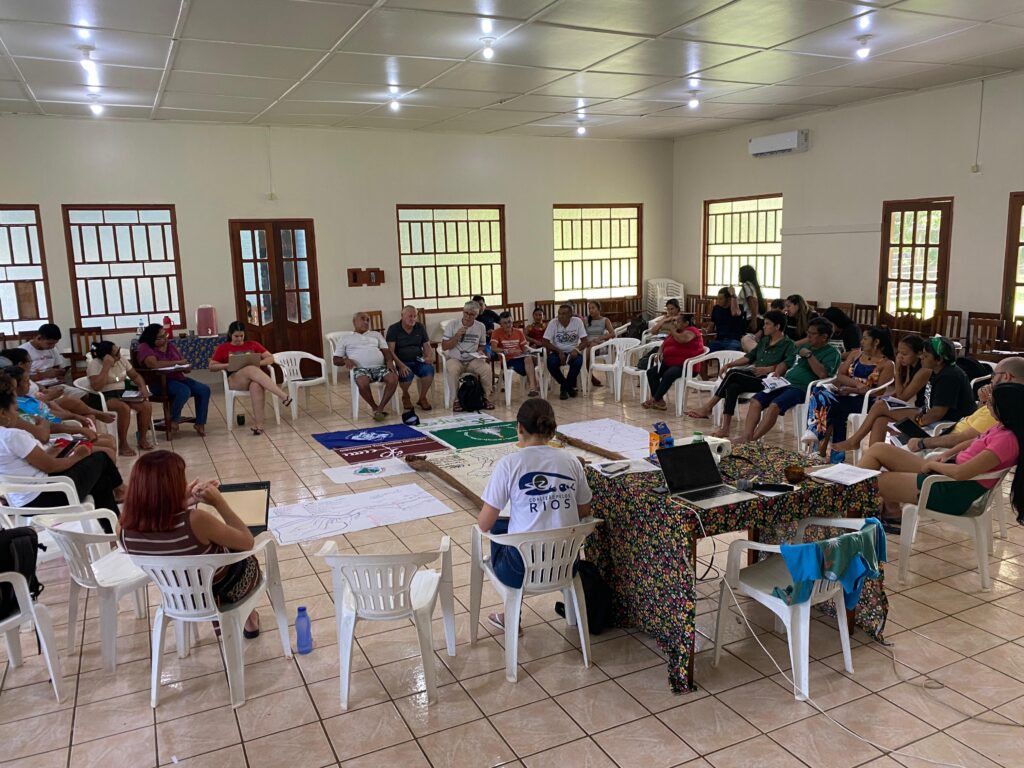
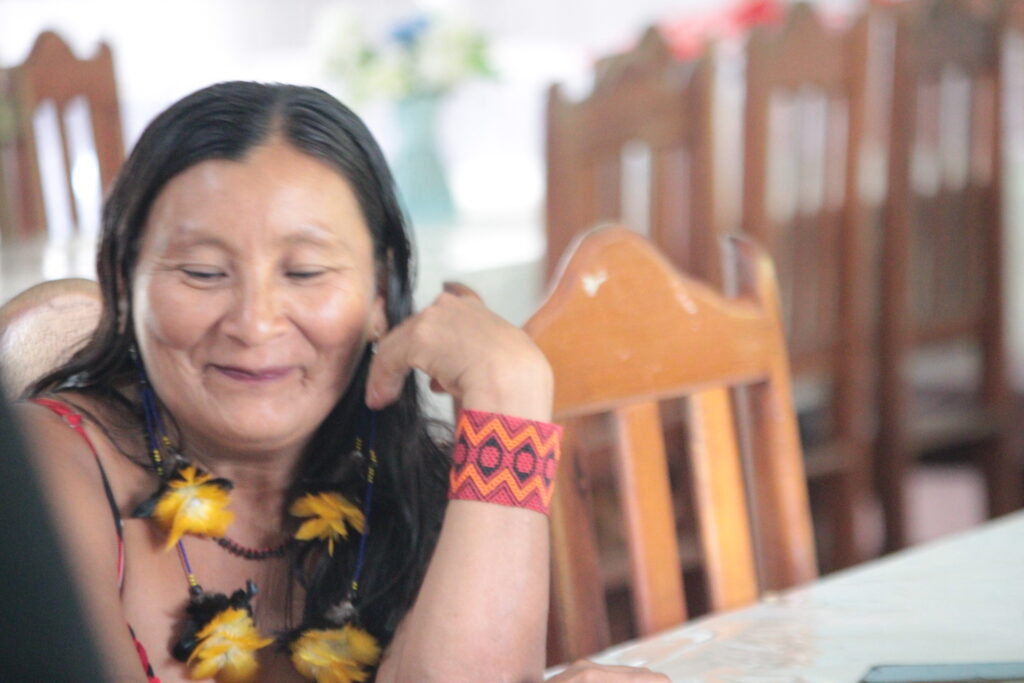
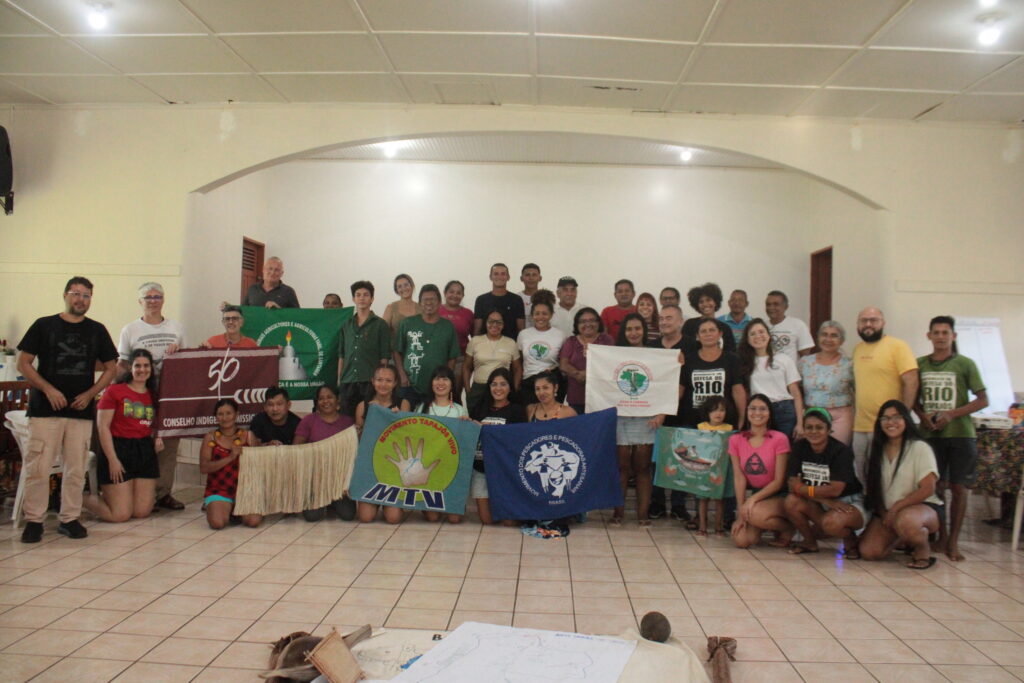
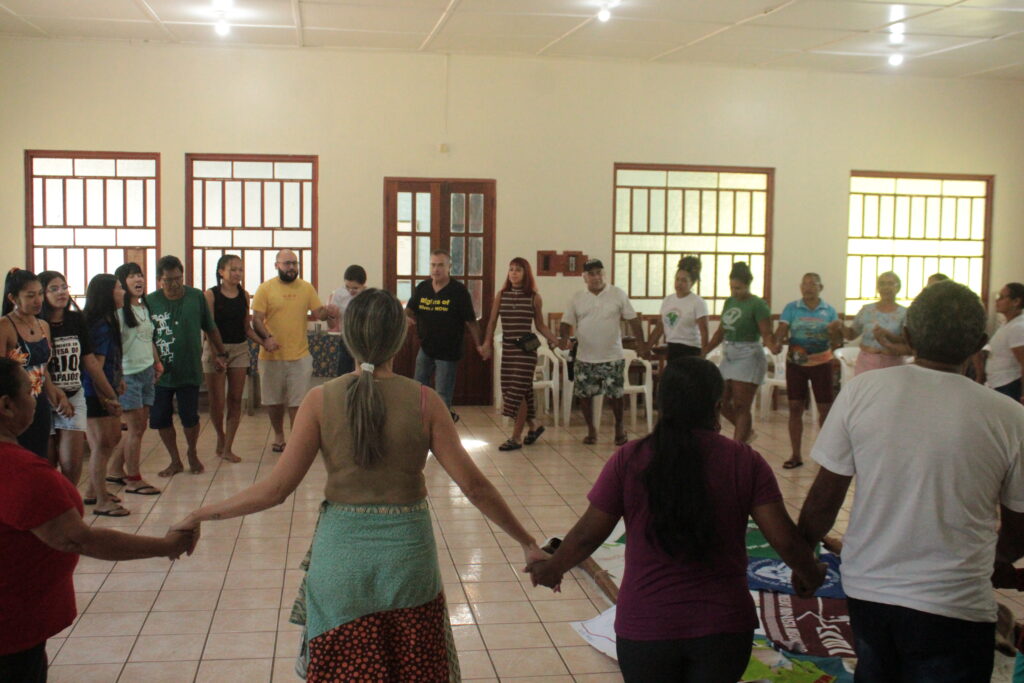
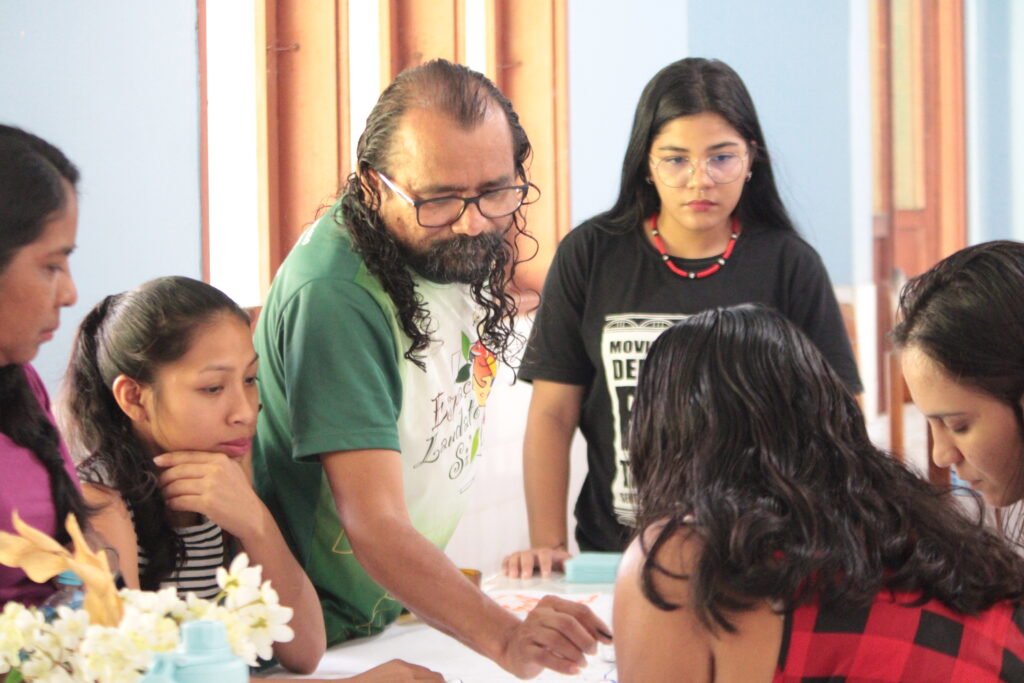
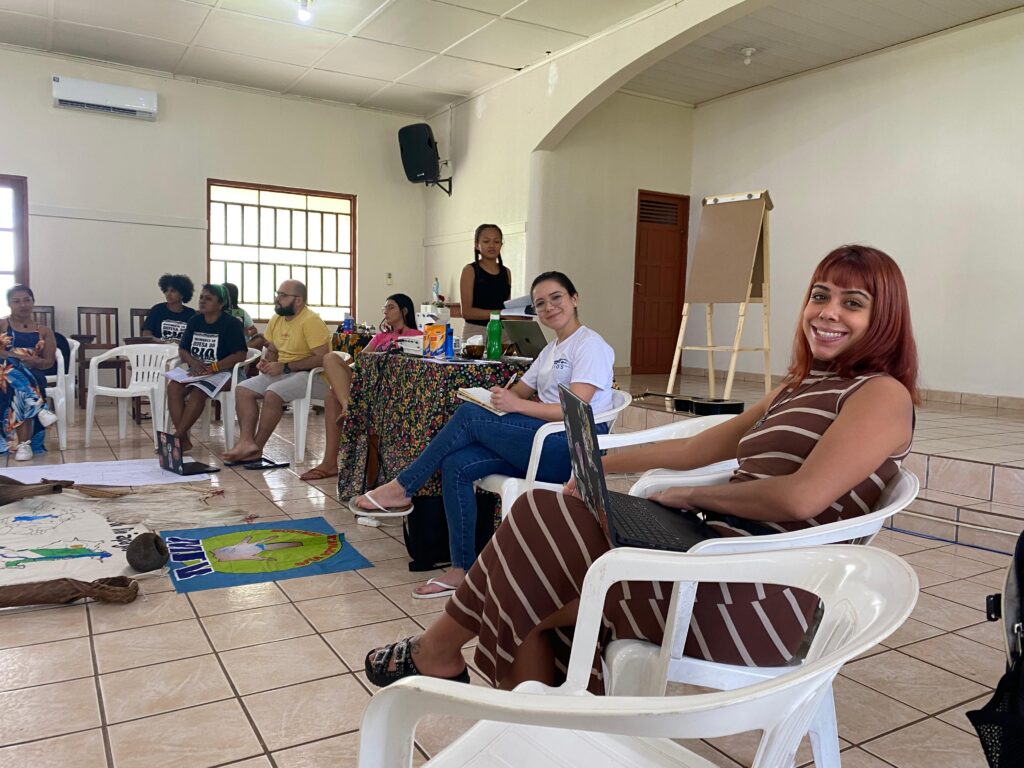
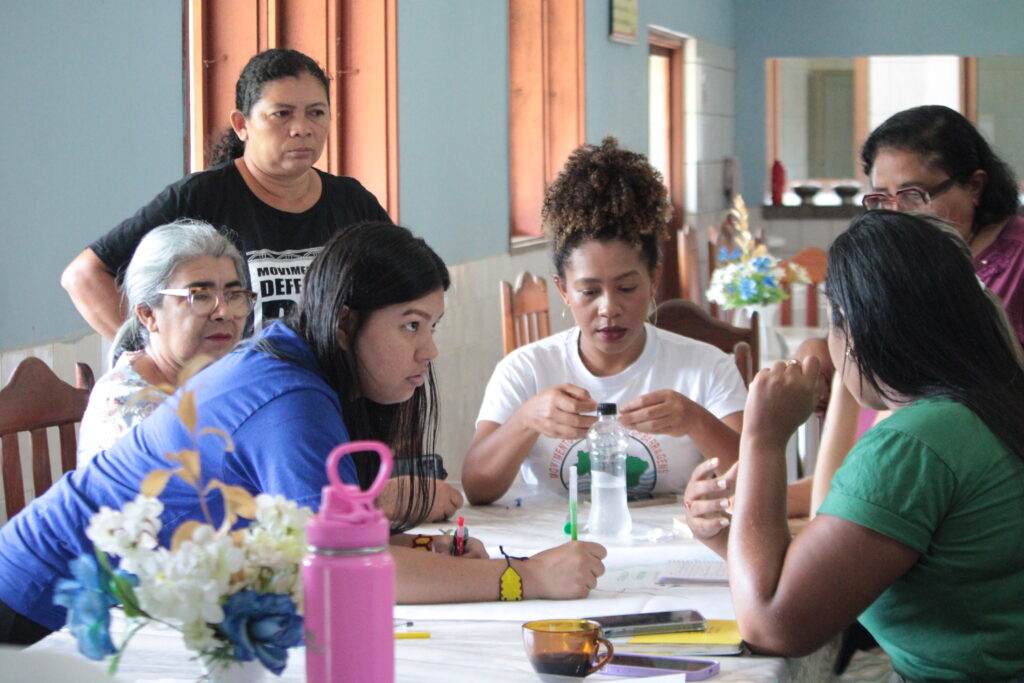
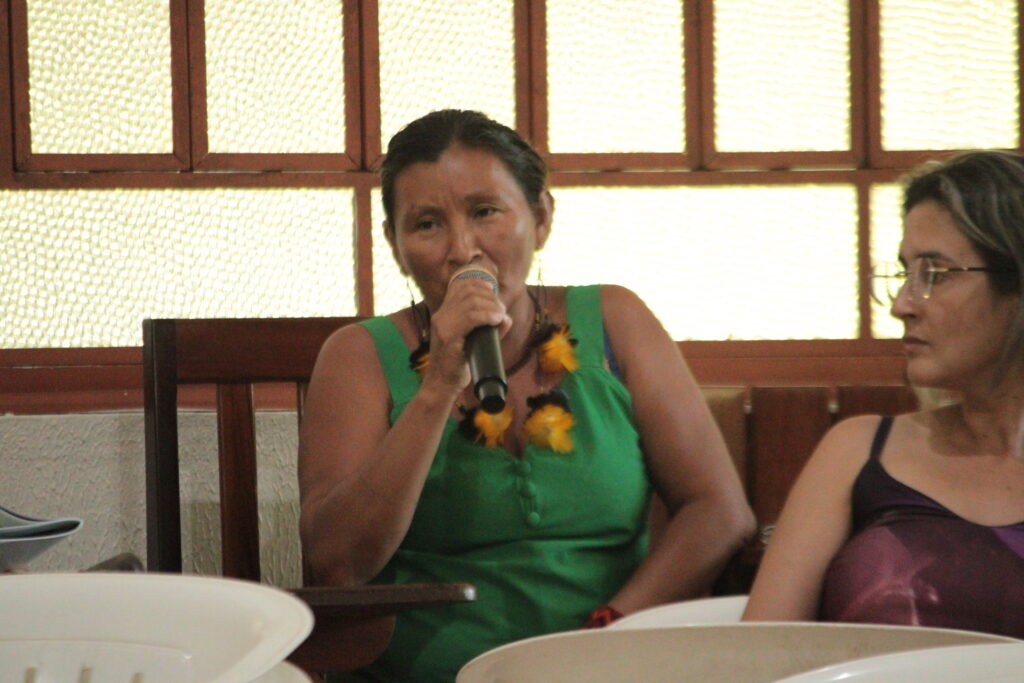
These efforts build on a formative process launched at the 2019 Gathering of the Waters, when representatives of the Tapajós, Madeira, Juruena, Teles Pires, and Xingu rivers signed a joint commitment to resistance. From this initiative emerged the Amazonian Socio-Environmental Militancy School (EMSA), a political and popular education initiative aimed at youth and emerging leaders in the basin. In 2025, the rights of nature and of rivers became central themes in the school’s curriculum.
What might seem like an abstract or utopian debate gains urgency and substance when seen from the lived reality of those who coexist daily with the Tapajós River. These are the voices that clearly and forcefully denounce the contamination of igarapés, dredging of riverbeds, pressure on territories, disappearance of springs, destruction of sacred places, and many other forms of violence to which the river is subjected. This reality is worsened by recent water crises, with severe droughts in 2023 and 2024 that have dramatically impacted the region’s sociobiodiversity, underscoring the urgent need for structural change in how we relate to the rivers of the Amazon.
In this context, the right of the Tapajós River is not merely a legal demand. It is a call for a paradigm shift. Recognizing the river as a subject of rights means rejecting the idea that water has only economic value. It means affirming that the river has the right to live, to breathe, to be safe, and to run free. This understanding, deeply rooted in Indigenous and traditional knowledge systems, must also reach institutional spaces such as municipal councils, legislative assemblies, universities, and courts.
More than that, it is essential that this understanding reaches broader society. It is necessary to raise awareness and build collective understanding so that the rights of the river become part of our daily lives, our practices, and our relationship with nature and territory.
For MTV, the realization of the rights of the Tapajós depends less on the legislator’s pen and more on collective mobilization. Laws are important and necessary, but they are not enough. The rights of nature must be rooted in everyday life—in schools, in community practices, in rituals, in educational processes, and in the lives of those who live along the river. These rights must be lived, not merely declared. “The greatest obstacle to the realization of the rights of nature is the way we see ourselves in the world. As long as humanity insists on seeing itself as the owner of the Earth, rather than part of it, the destruction will continue,” says Alice Matos of the Tapajós Vivo Movement.
The struggle for the rights of the river is, at its core, a struggle for life. It is also a dispute over memory and the future. The Tapajós still flows. But how much longer can we ensure that it remains alive? And what are we willing to change in our lives, choices, and policies to ensure that it continues to be a river, and not just a memory?
In this light, resistance is not a matter of individual choice or activism. It is a collective necessity—to safeguard territories, keep cycles alive, and preserve the relationships between peoples, waters, and forests. That is why grassroots education processes, grounded in critical and reflective practices, are essential for forming new leadership committed to the defense of rivers, land, and life in all its forms.
Photo credits: Movimento Tapajós Vivo and International Rivers

